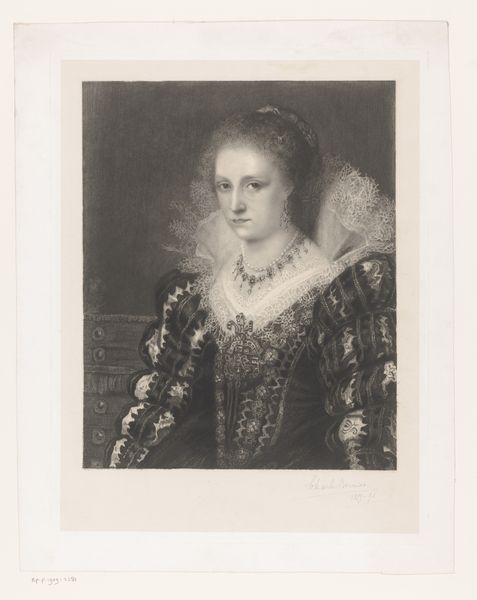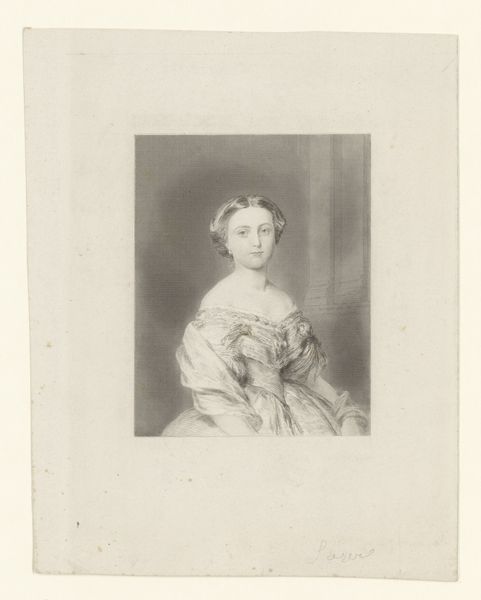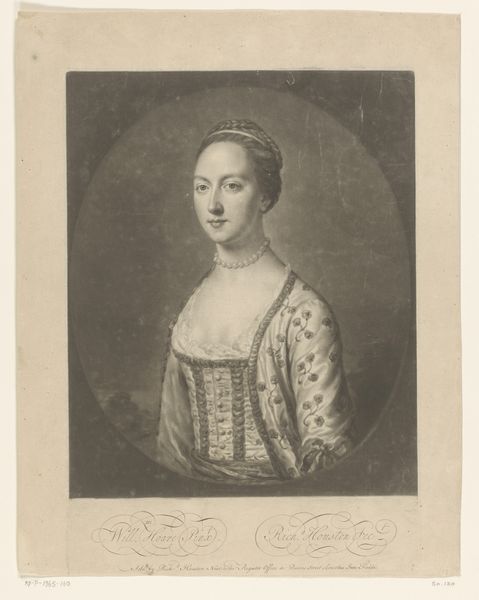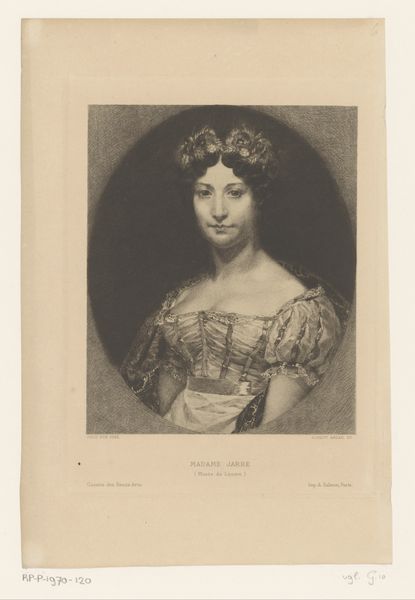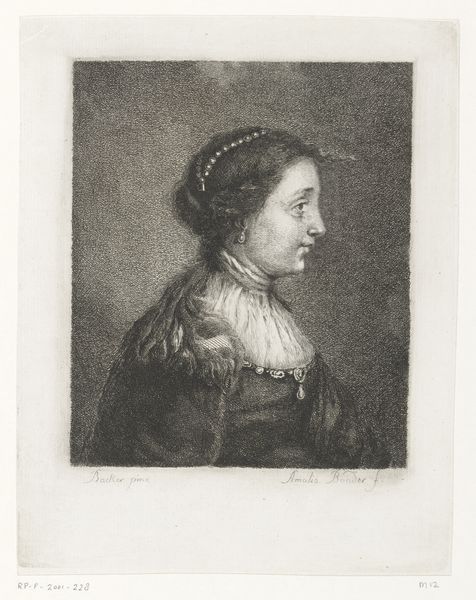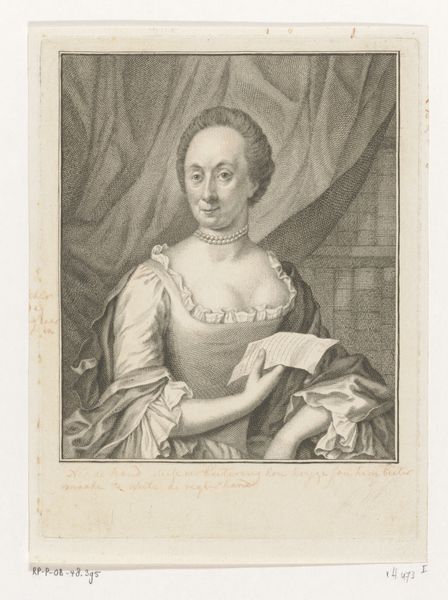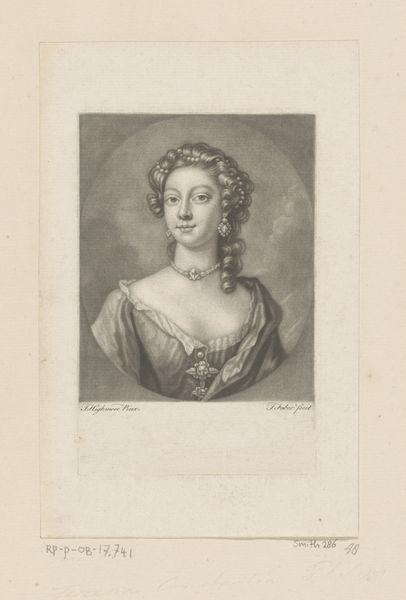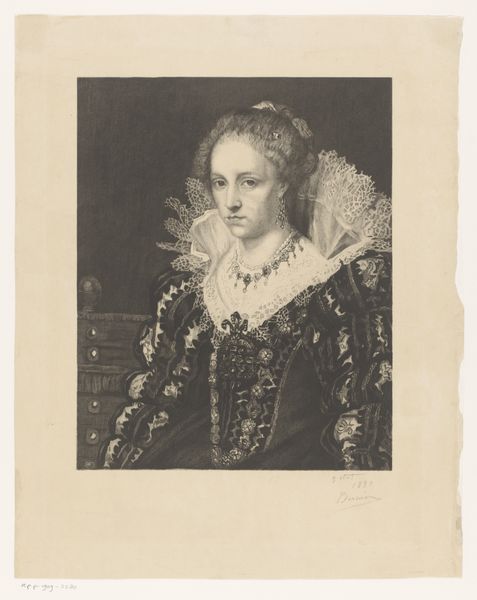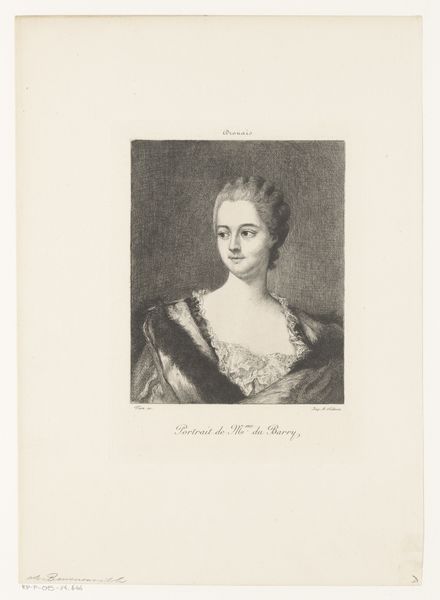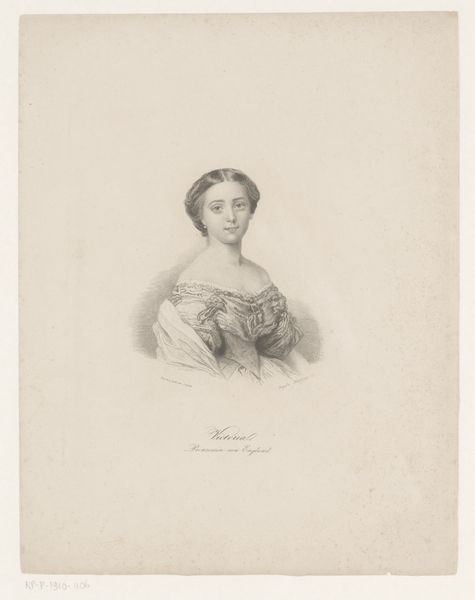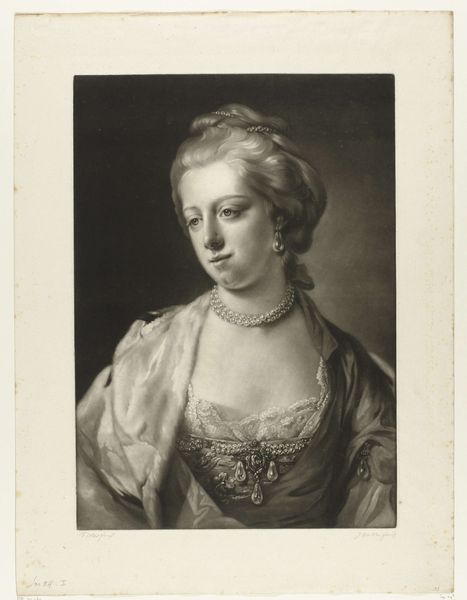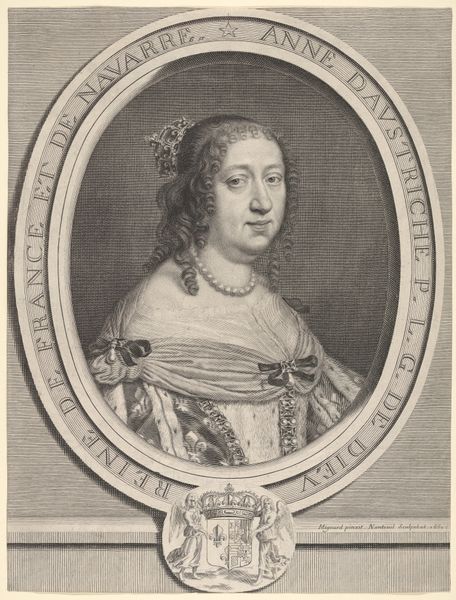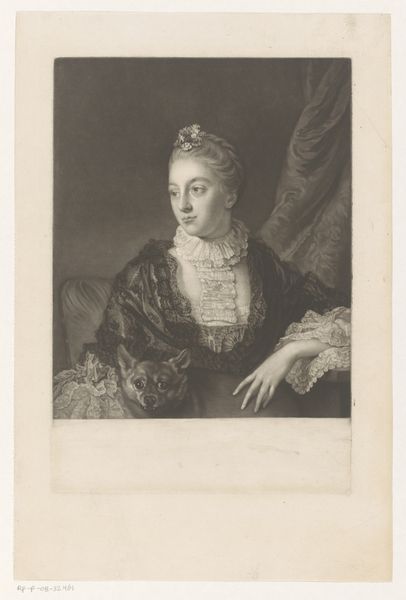
drawing, pencil
#
portrait
#
pencil drawn
#
drawing
#
impressionism
#
pencil sketch
#
pencil drawing
#
pencil
#
portrait drawing
#
academic-art
#
realism
Dimensions: height 197 mm, width 142 mm
Copyright: Rijks Museum: Open Domain
Curator: What strikes me immediately about this portrait is the artist’s sensitive handling of light and shadow to create such depth. Editor: This drawing, made in 1882, is entitled “Portret van Jacqueline de Caestre”, or Portrait of Jacqueline de Caestre. It was sketched by Louis Joseph Greuse and is currently housed here at the Rijksmuseum. Considering Greuse’s position within academic art, there’s a quiet but pervasive subtext regarding gendered expectations. Curator: Oh, yes! I noticed that, too. She isn't idealized in any way; the artist hasn’t shied away from portraying her somewhat plain features. This choice pushes against the tradition of rendering women as objects of beauty alone. What do you make of its materiality? Editor: The subtle gradations achieved with pencil are really remarkable. Greuse masterfully captures the texture of her hair and the delicate lace details through variations in pressure and density. Look at how the shading around her eyes hints at a world of experience, maybe even weariness. It defies its two-dimensional confines! Curator: Absolutely, and her gaze seems so direct. Almost confrontational, really challenging the viewer's assumptions. Perhaps this subverts typical power dynamics within portraiture, particularly between artist, subject, and audience. Is she merely the representation of the bourgeoisie, or a reflection of its discontents? Editor: A crucial reading! The realism on display certainly elevates the work beyond a simple commissioned piece; one may even describe the composition as unflinching in its starkness. And by moving away from color, all attention is brought to line and tone. This enables a focus on those intrinsic elements of portraiture, such as structure and affect. Curator: True. Looking at it now, and thinking about Greuse's body of work and the historical moment in which he made this, one has to question his intention when stripping away artifice and presenting her so…frankly. Editor: It really lingers in the mind. We see the marks, and it invites questions. Curator: Indeed. A pencil drawing, simple as it seems, can provoke a wealth of insights when we analyze form and context in tandem.
Comments
No comments
Be the first to comment and join the conversation on the ultimate creative platform.
